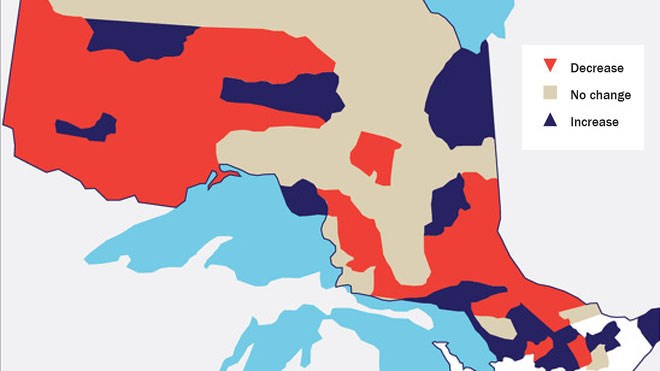“The moose herd is down everywhere in North America right now, and they're not sure why,” Childs said Wednesday. “They're trying to figure out what the cause of it is. It's a bit of a mystery, although they think global warming may be playing a role in it.”
According to figures from the Ministry of Natural Resources, moose herds declined in six of the seven of the seven wildlife management areas in northeastern Ontario surveyed this winter. Sault Ste. Marie and Kirkland Lake saw the biggest declines, while Sudbury's population is relatively stable.
“Factors such as harvest, predation, parasites, habitat condition and low calf numbers can all contribute to shifts in moose population,” the MNR release said. “There have also been concerns about the health of moose populations in areas close to Ontario, such as Minnesota and Manitoba. Ontario will continue to monitor the moose population and collaborate with the hunting community to ensure moose populations are sustainable.”
While significant, moose herds in Ontario are faring better than places such as British Columbia and Minnesota, where, in some areas, traditional populations have been decimated.
Global warming is cited as the most likely cause, with herds facing prolonged attacks by insects and parasites thriving in the warmer weather. Heat stress is also a factor, with the cold-weather animals being forced to cope with warmer temperatures they're not prepared for.
All of which is bad news for the moose, and moose hunters. In the Sudbury zone, moose tags have dropped from 115 in 2011 to 98 next year. Childs said hunting moose is a big draw for American tourists.
“It's a bit of a premium hunt,” Childs said. “You get a fisherman up here who rents a boat and motor from you, and you can make a little bit of money. But you can certainly make a lot more from a moose hunter than you can from a fisherman.”
When the current wildlife management system started several years ago, Childs said he had seven moose tags in two different zones.
“Right now I have one tag in one unit,” he said. “So every time they reduce it, it's got a big impact on my income.”
He's been able to convert his one gun hunt tag into two archery hunt tags, which allows him to add an extra hunt each year.
“But I can tell you, it's getting tough,” Child said. “I appreciate the ministry is trying to look out for the moose, and not the moose outfitters. But we sure get impacted by it.”
More information about the moose tags available in Ontario can be found at ontario.ca/hunting. Ontario's moose draw opens on April 22.
Quick Facts
-- Ontario’s moose population has remained relatively stable over the past decade; however, most areas of northeastern Ontario and the more accessible parts of northwestern Ontario have recently been showing signs of decline.
-- Many factors can contribute to population shifts, such as harvest, predation, parasites, habitat condition and low calf numbers.
-- Ontario continues to set long-term population targets and look at how and when moose can be hunted in this province through its Moose Project.
Join Sudbury.com+
- Messages
- Post a Listing
- Your Listings
- Your Profile
- Your Subscriptions
- Your Likes
- Your Business
- Support Local News
- Payment History
Sudbury.com+ members
Already a +member?
Not a +member?
Sign up for a Sudbury.com+ account for instant access to upcoming contests, local offers, auctions and so much more.
